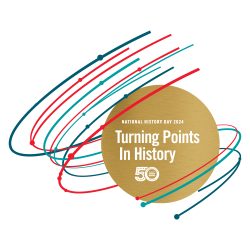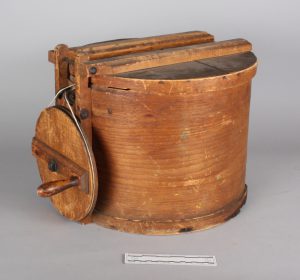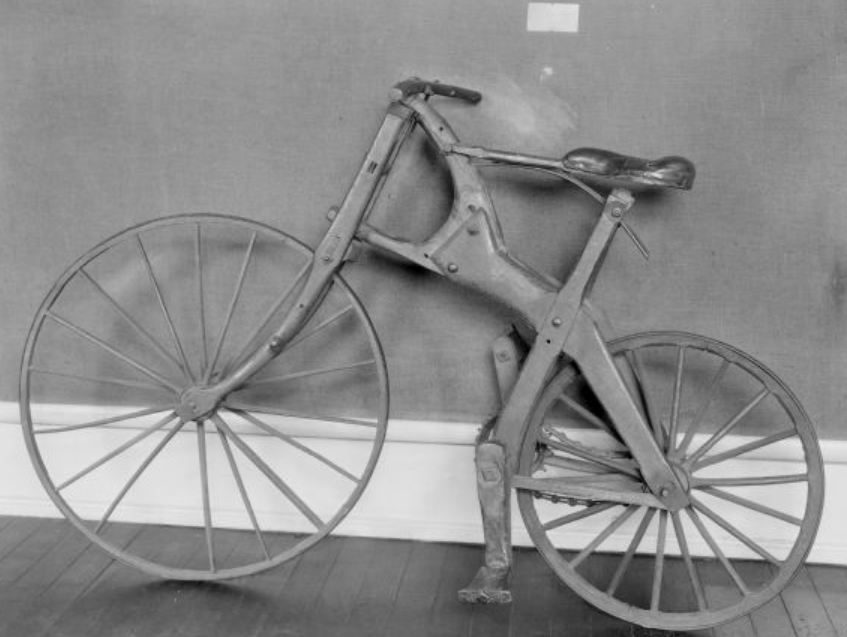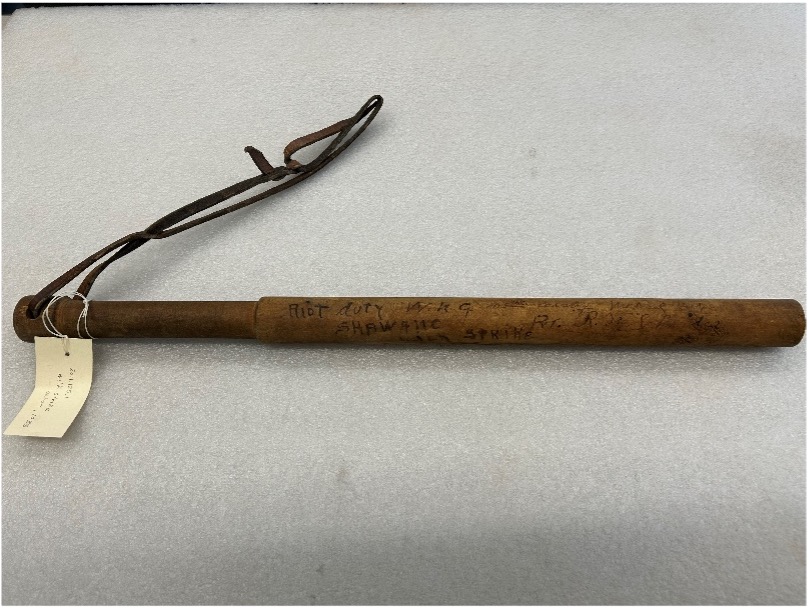
National History Day is a project-based history contest for students in middle and high school. Every state has a program, and you can find out more about how to join Wisconsin’s National History Day here.
For students and teachers who are already part of National History Day, Wisconsin 101 has many resources you can use. Whether you are working on an exhibit, a paper, a presentation, or a website, we are happy to help!
“Turning Points in History”– Objects and the 2024 National History Day Theme
An “object history” tells stories about the past by starting with an object. Objects document past events and remind us of the thoughts, values, and experiences of people long gone. They also help us explore the links between distant events and processes.
For National History Day, you can write your own object histories, or you can explore our website to find objects that relate to your project. Some objects on Wisconsin 101 connect directly with this year’s theme of “Turning Points in History.” We’ve compiled a list of ideas to help you get started.
Take some time to explore the objects and stories on our site. You might be surprised by what kinds of connections you can build!
Resources for Students
- Map: Use the map on our homepage to find stories about objects from your part of the state.
- Finding objects: Begin by visiting your local museum or historical society. You can find a list of them here. If you have already begun a NHD project, then you can see what objects they have that might link to your project. When you talk to the curator be very clear about what you are researching. That way they can help guide you to the most useful objects. You can also visit places like the Milwaukee Public Museum, the Milwaukee Jewish Museum, the Neville Public Museum, or the Wisconsin Historical Society. And don’t forget to look for photos. Some are online while others you’ll need to visit in person.
- Useful objects: The best object for your project will include information about where it was made, when, how, who owned it, or why that person gave it to the archive. Remember, just because someone famous owned or created the object, doesn’t mean it will be useful for your project.
Resources for Teachers
- Tips for visiting an archive: Try contacting your local historical society or museum to see if they can provide a short tour of their collections and some time for students to see objects in the collection. Be clear with the archivist about what the project is so that they can help choose objects that are most useful for your students. Being specific about the students’ projects will help the archivist guide students through the collection. For instance, “The National History Day theme is ‘Turning Points in History’ this year. One of my students is interested in this theme as it connects to the history of labor conditions in the early twentieth century. Do you have any objects that might help her develop a local context for this project?”
- Lesson plans: Whether for National History Day or a classroom assignment, Wisconsin 101 can help you develop lesson plans for your classroom. We’re here to help.
- Sample High School Lesson Plan: Next Steps in Object History
- Contact us for more information about object-histories, lesson plans, and other resources.
Object Suggestions:
The Babcock butterfat test, developed at the University of Wisconsin, provided a simple, accurate, and inexpensive way to assess milk quality and to pay farmers accordingly. By improving standards and rewarding the best milk producers, the Babcock butterfat test transformed the dairy industry in the United States and set Wisconsin firmly on the path to becoming America’s Dairy State.
In the 1890s, mass-produced safety bicycles sparked a bicycle craze across Wisconsin. However, despite the lowered costs associated with mass production, not everyone could afford this new luxury. Tapping into the type of rural ingenuity evident in farmhands from all across southern Wisconsin, Atkinson hand-crafted his own bicycle, the Crab Tree Special, in 1893
In mid-May 1933, battles, clashes, and strikes erupted throughout Wisconsin. The catalyst? Milk. On the orders of the Governor, an army of 600 National Guardsmen, 800 special deputies, and local law enforcement marched into Shawano. Armed with nightsticks, the group was tasked with defending the county’s dairy production plants and shipments of milk from striking farmers.
Videos for Choosing and Researching NHD Topics
Featured Image: National History Day logo from wikimedia commons.


